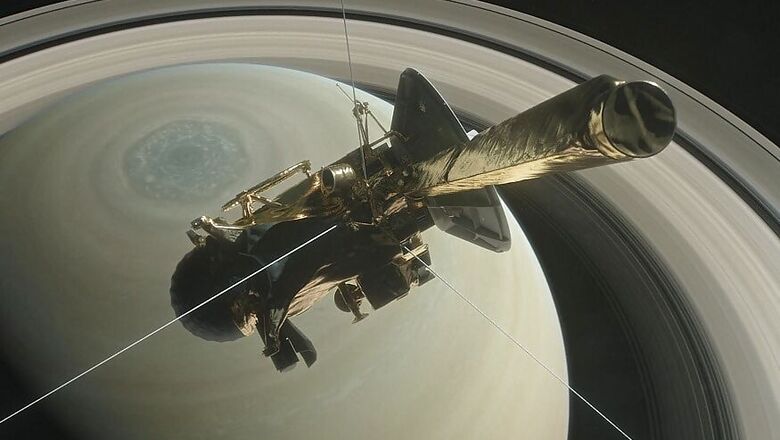
views
NASA’s Cassini Spacecraft is set to end its 13-year long inspection of Saturn today with a final dive into the planet’s day side. The series of dives by the NASA spacecraft into the heart of the planet began back in April, as Cassini made its way through Saturn’s rings in a 22-week long Grand Finale. Though the instruments on the spacecraft are still in a perfect working condition, the death plunge comes as it runs out of rocket fuel after venturing an approximate of 5 Billion miles. The final calculations by the NASA team forecast a loss of contact with the satellite at 7:55 pm EDT (Eastern Daylight Time) and the speed of the spacecraft at the time of the death dive to be around 113,000 kms per hour. NASA also predicts that Cassini will lose contact with Earth at around 1,500 kilometres above the surface of Saturn, as the spacecraft’s altitude control thrusters will fire at their maximum capacity before that in order to keep the antennas pointed towards the Earth for transmitting the data acquired at the final moments. The radio signals transmitted at the final moments will take around 83 minutes to reach Earth.
Though the final death plunge is yet to take place (around 5:30 pm IST today), Cassini has already started relaying its final images of the ringed planet as it empties the data on its onboard solid-state recorder. This is done in order to recalibrate the spacecraft for the near-real-time data relay at the time of the final plunge. "The spacecraft's final signal will be like an echo. It will radiate across the solar system for nearly an hour and a half after Cassini itself has gone," Earl Maize, Cassini project manager at NASA's Jet Propulsion Laboratory (JPL) in Pasadena, California was quoted as saying.
As per NASA, The final plunge of the Cassini spacecraft is necessary to ensure that Saturn’s moons, Titan and Enceladus in particular as they harbour sub-surface oceans, remain pristine for any future explorations. Over its 13-years long mission, Cassini has transmitted monumental data of the planet, its famous rings and its moons. With its death dive, Cassini will become a prestigious part of space exploration history as no other spacecraft has ever orbited and ventured so close to the ringed planet till date.
NASA will be airing live mission commentary and video of the Cassini death dive on the NASA Television and its online website from 7 to 8.30 a.m. EDT on Friday.
(With inputs from IANS)
Watch Video: Xiaomi Mi Mix 2 | First Look | China's Reply To Apple iPhone X



















Comments
0 comment